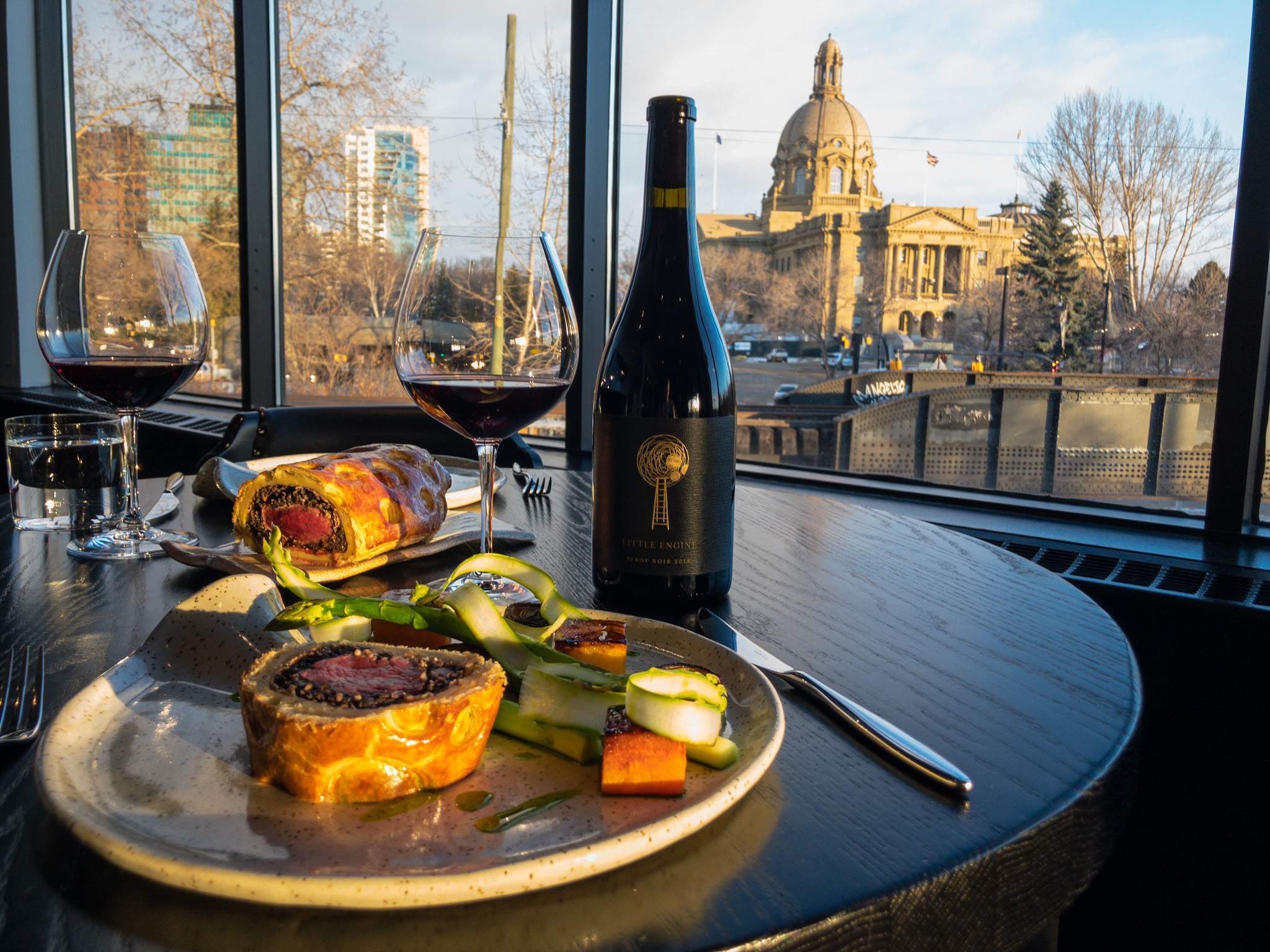
Beef Wellington
Canadian cuisine is on the verge of having a moment, but it’s probably not what you think. Surely none of us truly believed we’d arrive on the global culinary scene with a spicy Caesar in one hand and a butter tart in the other—no matter how delectable the ubiquitous butter tart is. And yet there we were, the world’s second-largest country, a proud smorgasbord of multiculturalism, seemingly trying to do just that.
Of course, before everyone else arrived the Indigenous Peoples of
Canada understood that the offerings of this vast land are abundant and vary widely from the Pacific to the breadbasket prairies; the Arctic
Circle to the greenbelt farmlands of Southern Ontario; Quebec to the Atlantic. Finally the rest of us have also begun to celebrate this bounty, and such is the intent of Chef Scott Downey at The Butternut Tree restaurant in Edmonton.
“What is Canadian food—maple syrup? Ketchup chips? Those things are Canadian but they’re not a representation of who
we are. Our melting pot nation was agriculturally built around the importation of known farmable species, but Canadian
food has more substance to it—from the best seafood in the world and incredible wild game to endless offerings of berries,”
the Alberta-born chef explains.
Earlier in his career, Downey cooked at Daniel Boulud’s Michelin-starred flagship Daniel in New York City, a celebration of French cuisine. Later, he worked the highly decorated restaurant Noma in Copenhagen, which focuses on growing within the region and showing seasonality. The influence of both is apparent on The Butternut Tree menu, where Downey entwines diverse international inspiration with products he can source right here within Canada’s borders. Every ingredient he uses is native, from pork, scallop, kale and sunchokes through the salt and pepper. The resulting menu is local and largely sustainable, as well as creative and for many of us, nostalgic.
“We don’t use citrus, tropical fruits, or anything along those lines. Chilis are a staple ingredient for other restaurant pantries, but not ours,” says Downey. “We went through a giant exploratory research and development phase before opening to find out not just what is growing in Canada but who’s growing or making something quality here.”
Said another way, Downey’s goal isn’t to make food that’s good for Canada, but to make food that is excellent precisely because it’s from Canada. And it’s a focus that extends through libations.
“Every single wine on the list is Canadian and hand-picked for a specific reason,” Downey says proudly. “I’m at the point in my career when I try something or it’s presented to me, I notice when there’s something special about it. The Gold Pinot [Noir] was the first I had from Little Engine. It’s this wonderful wine that can hit those notes across all seasons—it has an unctuousness that we can pair throughout the year. We’re finding little gems like this across Canada. If we’re going to do something we want it to be the best and most proper representation of what we do. You can tell with Little Engine they’re doing the same.”
For this occasion, Downey paired the Little Engine 2018 Gold Pinot Noir with Beef Wellington. “It sounds so fancy, but we can break it down to five easy steps,” he assures of the recipe. “The nice thing is that Beef Wellington has a couple layers to it: the underlying acidity of the wine gives a really nice flavour profile with the puff pastry—the fattiness of the butter content, the caramelization of that pastry on the outside. The mushrooms we cook down to a heavy duxelles and their earthiness brings out the unctuousness and berry and earthiness in the wine. The heavily seared beef we like to use is a Wagyu with a bit higher fat content which brings out the earthy components of the wine as well.”
Downey makes the recipe with butter from British Columbia, beef, horseradish mustard, vegetable oil, eggs, spring onions and beef from Alberta, and mushrooms from Nova Scotia. The result? A dish that acknowledges a slice of Canada’s history while celebrating ingredients grown or made within its borders at present. Food doesn’t get much more Canadian than that.


April 6, 2017
Philip King
Lorem ipsum dolor sit amet, consectetur adipiscing elit. Aenean sodales fermentum velit, vel efficitur ante mollis a. Sed nec dapibus metus, porttitor egestas purus. Sed ac luctus nisi. Nullam eget pulvinar nunc, at sagittis purus. Aliquam vestibulum tempus aliquam. Sed scelerisque facilisis sapien.
April 6, 2017
Ethan Wood
Vivamus pulvinar tellus id augue vehicula, sit amet congue orci cursus. Sed fringilla lectus velit, at aliquet arcu ultrices vitae. Sed vitae arcu porttitor, rutrum nisl nec, tristique mauris. Sed nec dui luctus, elementum est id, pellentesque justo, etiam dui metus.
April 6, 2017
Kay Mills
Lorem ipsum dolor sit amet, consectetur adipiscing elit. Aenean sodales fermentum velit, vel efficitur ante mollis a. Sed nec dapibus metus, porttitor egestas purus. Sed ac luctus nisi. Nullam eget pulvinar nunc, at sagittis purus. Aliquam vestibulum tempus aliquam. Sed scelerisque facilisis sapien.